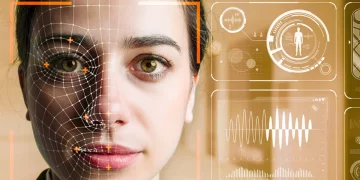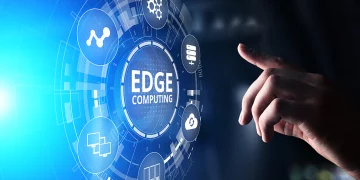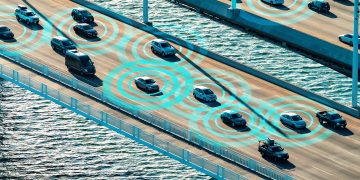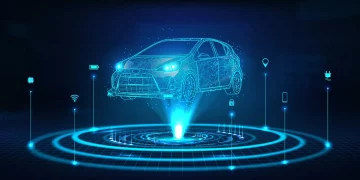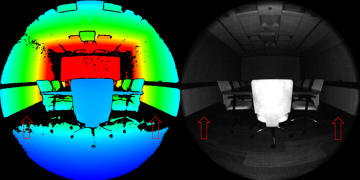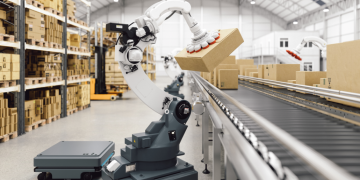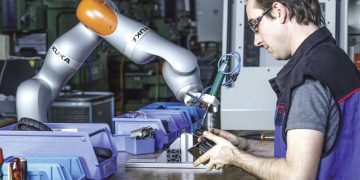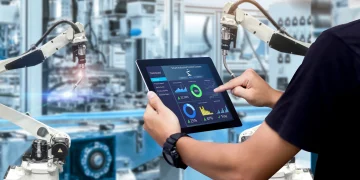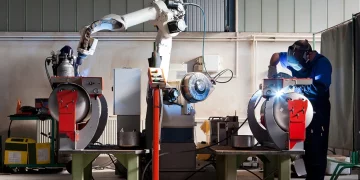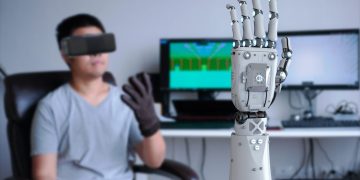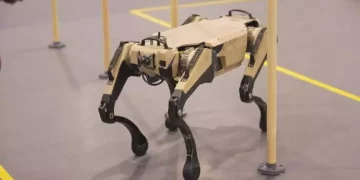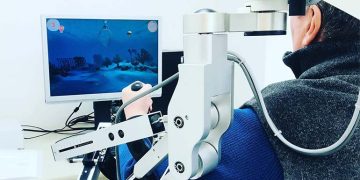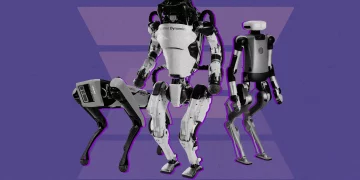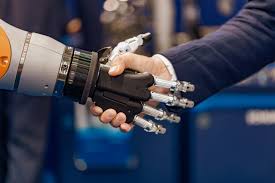In the last few decades, the field of robotics and human-robot interaction (HRI) has undergone profound transformations, evolving from theoretical explorations to practical applications that are increasingly integrated into various aspects of human life. Today, these fields are at the forefront of interdisciplinary research, with breakthroughs that not only push the boundaries of technology but also redefine the ways in which robots and humans collaborate, communicate, and coexist. From advanced AI and machine learning algorithms to the development of robots capable of mimicking human emotions, the future of robotics is marked by diversity, complexity, and innovative solutions to long-standing challenges.
This article explores the latest developments in human-robot interaction and robotics science, focusing on the breakthroughs that are shaping the future of robotics. We will examine the diversification of research areas, from emotion recognition and cognitive robotics to the ethical implications of AI integration, and how these advancements are driving deep exploration into new and emerging possibilities for robots in society.
Introduction: The Expanding Horizons of Human-Robot Interaction
Human-robot interaction is not a new concept; however, recent technological advancements have revolutionized this relationship, moving from robotic assistance in industrial settings to the development of robots capable of interacting with humans on a much deeper level. Historically, robots have been designed primarily to perform specific tasks—whether in manufacturing, space exploration, or logistics. However, the nature of human-robot interaction is now expanding to encompass a range of emotional, cognitive, and social dimensions.
The field of robotics has long been focused on improving the capabilities of machines to perform tasks that were once thought to require human intelligence. But now, research is diving deeper into understanding how robots can learn, adapt, and interact with humans in more human-like ways. This includes advances in areas such as emotional intelligence, cognitive models of learning, advanced decision-making algorithms, and robot autonomy. As these fields evolve, the diversity of research topics has exploded, opening up new avenues for deeper exploration and application.
Diverse Areas of Breakthrough Research in Robotics and HRI
1. Emotional Intelligence in Robotics
The study of emotional intelligence in robots is one of the most promising and diverse areas of research in HRI. Emotional intelligence, defined as the ability to recognize, interpret, and respond to human emotions, plays a pivotal role in creating robots that can engage with humans in meaningful ways. Robots with emotional intelligence can better support users in various contexts, such as healthcare, education, and customer service, by responding empathetically to their needs.
- Emotion Recognition and Response
Breakthroughs in emotion recognition algorithms have enabled robots to detect emotional states through facial expressions, voice tone, body language, and even physiological signals such as heart rate. By interpreting these signals, robots can tailor their behavior, providing comforting responses when needed or offering encouragement during challenging moments. These emotional capabilities are especially important in settings where empathy is essential, such as in elderly care or therapy. - Simulating Emotions in Robots
Another significant advancement is the ability for robots to simulate emotions themselves. By modulating their facial expressions, voice tone, and body language, robots can engage with humans in ways that feel more natural and human-like. These robots not only recognize emotions but also demonstrate appropriate emotional responses to enhance the interaction experience.
2. Cognitive Robotics and Machine Learning
Cognitive robotics, which focuses on creating robots capable of intelligent behavior and learning, is another critical area of research. Cognitive robots are designed to mimic human cognitive abilities, such as perception, reasoning, memory, and decision-making. These robots can adapt to new situations, learn from their experiences, and improve their performance over time.
- Learning from Experience
A key development in cognitive robotics is the use of machine learning algorithms, particularly reinforcement learning, which allows robots to learn from trial and error. Robots equipped with such algorithms can improve their abilities in real-time, adjusting their actions based on feedback from their environment. This learning process enables robots to perform tasks with greater autonomy and precision. - Memory and Knowledge Representation
Another breakthrough in cognitive robotics involves improving robots’ memory systems. By creating more sophisticated ways to store and retrieve information, robots can build a mental model of their environment and previous interactions. This enables them to act more intelligently in complex and dynamic settings, adjusting their actions based on accumulated knowledge.
3. Autonomy and Decision-Making Algorithms
Advancements in robotics autonomy are enabling machines to make complex decisions independently, without requiring constant human input. Autonomous robots are increasingly being deployed in environments where human supervision is limited or impractical, such as in disaster response, space exploration, or autonomous vehicles.
- Adaptive Decision-Making
Robots equipped with adaptive decision-making algorithms can make real-time decisions based on the context and objectives. These systems rely on artificial intelligence techniques, such as decision trees, Bayesian networks, and deep learning, to assess multiple variables and choose the best course of action. Autonomous robots are now capable of navigating through dynamic environments, responding to unforeseen challenges, and optimizing their behavior over time. - Multi-Robot Systems and Coordination
One particularly exciting area of autonomous robotics research is the development of multi-robot systems. These systems involve multiple robots working together to achieve a common goal, requiring advanced coordination and communication strategies. For example, swarm robotics uses the principles of collective behavior observed in social animals like ants or bees to enable robots to perform tasks collaboratively. This research holds promise for applications such as search and rescue missions or environmental monitoring, where large-scale coordination of robots can improve efficiency and effectiveness.
4. Human-Robot Collaboration (HRC)
As robots become more capable of performing complex tasks, the need for human-robot collaboration becomes increasingly important. Rather than replacing humans, robots are being designed to assist, augment, and collaborate with human workers. This is especially true in industries such as manufacturing, healthcare, and construction, where robots can work alongside humans to improve productivity and safety.
- Physical Human-Robot Interaction (pHRI)
A major breakthrough in human-robot collaboration is the development of robots capable of safe and effective physical interaction with humans. Robots designed for physical collaboration must be equipped with sensors, such as force-torque sensors, to detect human presence and respond appropriately. These robots are built with the capability to adjust their movements in real-time, ensuring that they can work in close proximity to humans without causing harm or discomfort. - Social Human-Robot Interaction (sHRI)
In addition to physical collaboration, robots are also being developed for social interaction with humans. These robots are designed to engage in meaningful social exchanges, such as conversing, offering emotional support, or participating in collaborative decision-making. Social robots can enhance human productivity, especially in team-oriented environments, by fostering a positive and supportive work atmosphere.
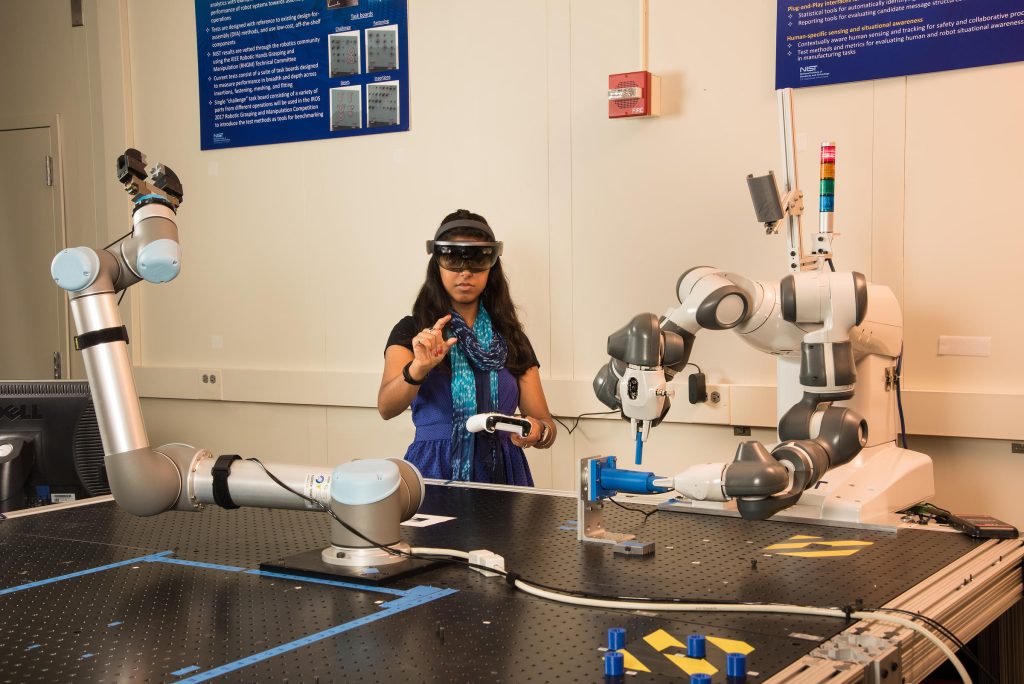
5. Ethical and Legal Implications of Robotics
As robots become more autonomous and capable of interacting with humans in emotionally intelligent ways, the ethical and legal implications of their integration into society are gaining attention. Researchers are exploring the moral, legal, and social ramifications of robots’ decision-making abilities, their role in the workforce, and their impact on society at large.
- Autonomy and Accountability
One of the central ethical challenges is determining accountability when autonomous robots make decisions that affect human lives. For example, in the case of autonomous vehicles or medical robots, who is responsible if a robot causes harm? Ethical frameworks are being developed to address these concerns, ensuring that robots are designed with accountability in mind and that there are clear regulations for their deployment in critical areas. - Bias and Fairness in AI
Another concern is the potential for bias in artificial intelligence systems. If robots are trained on biased data, they may perpetuate existing prejudices, leading to unfair treatment or discrimination. Research is being conducted to develop fairer AI systems and ensure that robots make decisions based on inclusive and unbiased criteria. - Privacy and Data Security
As robots become more integrated into personal spaces, privacy concerns are also a key issue. Robots capable of recognizing emotions, tracking physical movements, and processing sensitive personal data must be designed with robust data security systems to protect user privacy. Ethical guidelines are being developed to ensure that robots respect user autonomy and protect sensitive information.
The Future of Human-Robot Interaction: A Multidisciplinary Frontier
The future of HRI and robotics science is poised for even greater breakthroughs as interdisciplinary research continues to shape the development of more capable, socially intelligent robots. The fields of psychology, neuroscience, ethics, and social sciences are playing an increasingly important role in informing the design of robots that can understand and interact with humans in meaningful ways. In the coming years, we can expect robots to become more emotionally intelligent, more autonomous, and more integrated into society.
Some of the most exciting areas of exploration include:
- Neuro-Robotics: Research in neuro-robotics seeks to connect human neural systems directly with robotic systems. This could lead to breakthroughs in brain-computer interfaces, enabling more direct and intuitive control of robots and even enhancing cognitive capabilities.
- AI-Driven Personal Assistants: Future personal assistant robots will be able to understand and anticipate user needs, offering context-aware suggestions and support that are seamlessly integrated into daily life.
- Robots for Social Good: From disaster response to elderly care, robots are being developed to serve the public good. These robots will not only perform tasks but also engage with people in ways that improve quality of life and foster social connections.
Conclusion: A New Era of Human-Robot Interaction
The breakthroughs in human-robot interaction and robotics science are driving the development of robots that are not just tools, but companions capable of engaging with humans emotionally, socially, and cognitively. These advancements promise to transform industries, improve quality of life, and enhance the ways in which humans interact with technology. As research continues to evolve and diversify, we are entering an era where robots are no longer just mechanical workers but are becoming integral parts of human society, contributing to our well-being, productivity, and social cohesion. With careful attention to ethical considerations and human-centric design, the future of robotics and HRI is filled with immense potential.






